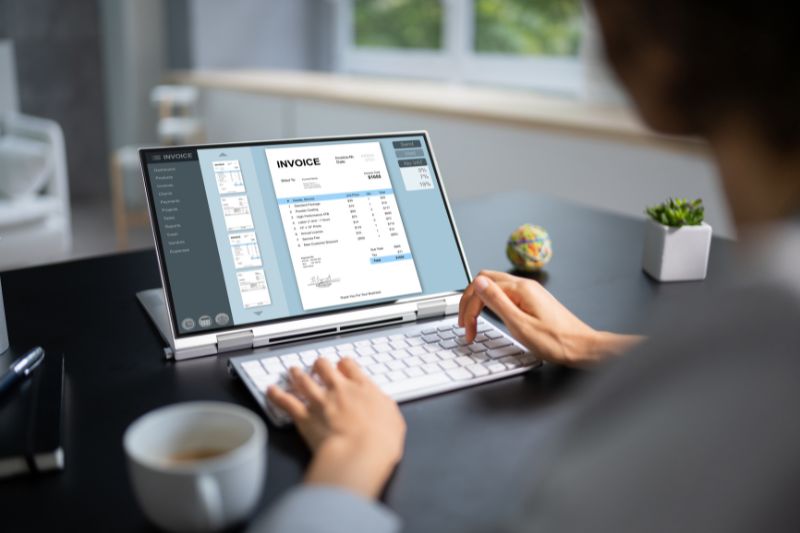AP Automation – All You Need to Know

Produced by our content partners and reviewed by Envoice’s internal experts to ensure it reflects real accounting workflows and accurate product usage.
Accounts payable is arguably one of the most important aspects of a business, and failing to properly manage your accounts payable can lead to serious financial and operational consequences for a business, such as damaged supplier relationships, supply disruptions, and an increase in borrowing costs, to name a few.
With so much at stake, it is imperative that you’re able to manage your accounts payable process efficiently. We take you through the process of making this a reality.
What is AP Automation
AP automation systems are comprehensive technology solutions that use advanced features such as optical character recognition (OCR), AI, and machine learning capabilities to automate and optimize accounts payable processes.
Automating this process speeds up the turnaround on the processing of invoices, reduces approval process and payment bottlenecks, eliminates human error, duplication and fraud, and provides a full audit trail of financial transactions.
How Does the AP Automation Process Work?
The process of automating accounts payable can be broken down into eight main steps:
- Set up an AP Automation System – Configure software to handle invoice intake, routing, approvals, and payments.
- Receive and Import Invoices – Electronic invoicing is fully implemented by scanning or uploading into the system.
- Digitize and Code Invoice Data – Optical Character Recognition (OCR) or digital tools extract and categorize invoice details.
- Match Invoices with Documents – Invoices are automatically matched with purchase orders (POs) and goods receipts for verification (2- or 3-way matching).
- Initiates the invoice approval process – Invoices are routed to the appropriate approvers based on predefined business rules or thresholds.
- Approve or Flag Exceptions – Approvers verify and approve invoices; exceptions (e.g. discrepancies or missing data) are flagged for review.
- Schedule and Process Payments – Approved invoices are scheduled for payment based on due dates or cash flow preferences, reducing payment errors.
- Integrate with Financial Systems – Data syncs with ERP or accounting software to update ledgers and maintain accurate records.
- Monitor and Report – The system tracks invoice status, provides audit trails, and generates reports for performance and compliance.
Benefits of AP Automation
An accounts payable software can be a great way to streamline your accounting processes. Here are some benefits you can acquire by automating your payment process:
Increased Efficiency with Fewer Errors
Imagine how much faster your finance team can complete the entire AP process without worrying about misplaced paper invoices or invoice related documents. Instead of spending hours manually processing invoices and doing payment reconciliation, you can use the time saved to focus on more important tasks.
Accounts payable automation also eliminates the possibility of human error. When your finance team uses AP software to process supplier invoices, they can easily identify duplicate invoices and automatically match each item to proper expense categories. This helps cut costs and keep your company’s books clean.
Improved Cash Flow and Early Payment Discounts
Sending out advance payments to vendors can be faster and more efficient, positively affecting businesses’ ability to capitalize on early payment discounts. Investing in accounts payable automation can significantly reduce the company’s turnaround times and finance costs.
Better visibility into your finances
With an automated system in place, it’s easier to get a clear picture of everything you’re spending money on—and where that money is going, especially when managing sensitive financial data across multiple departments. This allows you to streamline processes and get more insight into how much money is being wasted or lost through poor accounting practices.
And when you’re using an automated system integrated with other systems in your organization, like payroll and human resources, it will be even easier to handle your business finances.
Accounting Systems Integration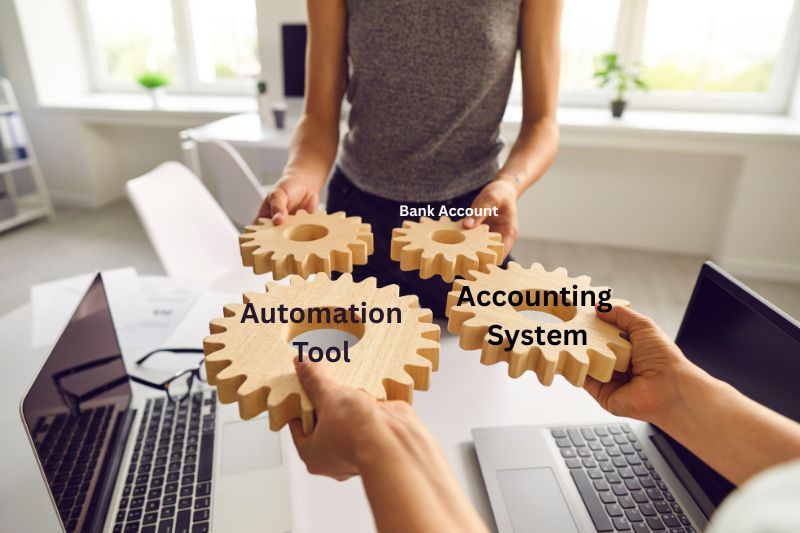
Seamless integration capabilities between your AP automation software and your existing accounting systems is a game-changer for any organization looking to streamline its invoicing and payment process.
By connecting your AP automation solution directly with your ERP or accounting system, you enable real-time data exchange that drastically reduces invoice capture efforts and minimizes the risk of errors. This integration ensures that invoice processing, payment scheduling, and other manual tasks are automated, freeing up your AP team to focus on more strategic initiatives.
Unified data is an important element of automation
The right AP automation software is designed to work with a wide range of accounting systems, whether you’re using a cloud-based platform or an on-premise solution. This flexibility allows businesses to customize their AP automation solutions to fit their unique workflows and requirements, ensuring a smooth transition and optimal performance. With unified data and automated workflows, your accounts payable department gains real-time visibility into financial data, making it easier to manage approvals, process payments, and maintain accurate records.
Accounting Software Features Required for AP Automation
Before making your final choice of AP automation system, ensure you check that the software is capable of delivering the following features:
Automated Data Capture
An automation tool like Envoice has an “Exact Extract” feature that lets you digitally capture data from your accounting documents with 99.9% accuracy, saving you the time it takes to enter each receipt manually. [1]
It also allows employees to focus on more value-added activities, such as vendor management, instead of having to perform tedious tasks such as typing or scanning documents one by one into a computer system.
Automatic Approvals
Envoice allows you to create an invoice approval process for electronic invoices. You can also set up automatic payment rules so that when specific criteria are met, you can automatically approve and pay an invoice without having to do a manual data entry.
This can help you streamline your business operations, leading to fewer supplier inquiries about the invoice status and improving the vendor payments processes. For example, if you use the same invoice approval process for multiple accounts, you can save time by approving it for all of them simultaneously. [2]
Automated Payment Matching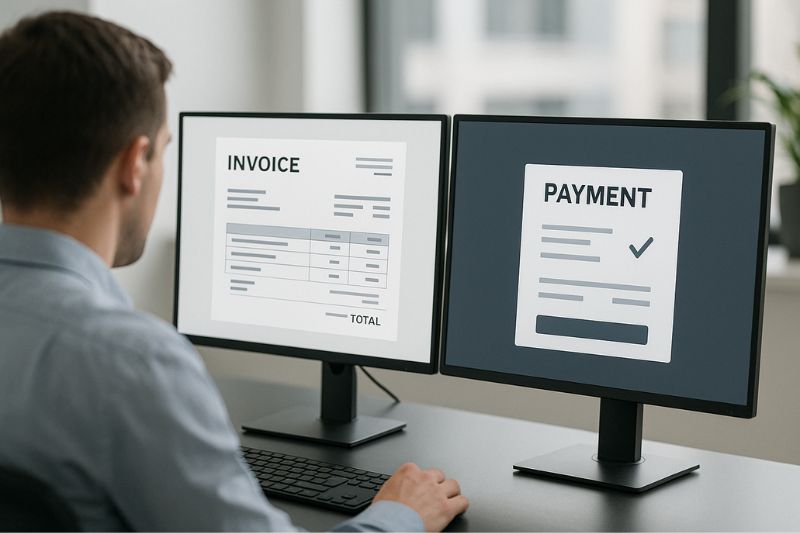
Companies need to have accurate records of their accounts payable because it helps them avoid paying too much or receiving too little. But if you’re using manual data entry to log your invoice data and match them with payments, chances are you’re missing some.
Payment matching reduces the risk of sending out duplicate payments or paying late fees by helping you identify which invoices have already been paid to avoid paying twice for an expense.
Automated payment matching can also help you with payment reconciliation if there are discrepancies in your records. For example, if you have one invoice that says you paid $1,000 and another that says you paid $500, the system will flag this as an error so you can investigate.
Split Payment Processing
With this function, you can automatically split payments into different categories (such as cash, check, and credit card), so you don’t have to do it manually. This will save you from creating multiple invoices for a single transaction.
Creating separate invoices for each payment type can be time-consuming and inefficient if you manually process this task. The reimbursement process can also be slow when each invoice needs to be reviewed separately by the AP department before being approved or denied.
Methods for Choosing the Best Accounting Software for Automating AP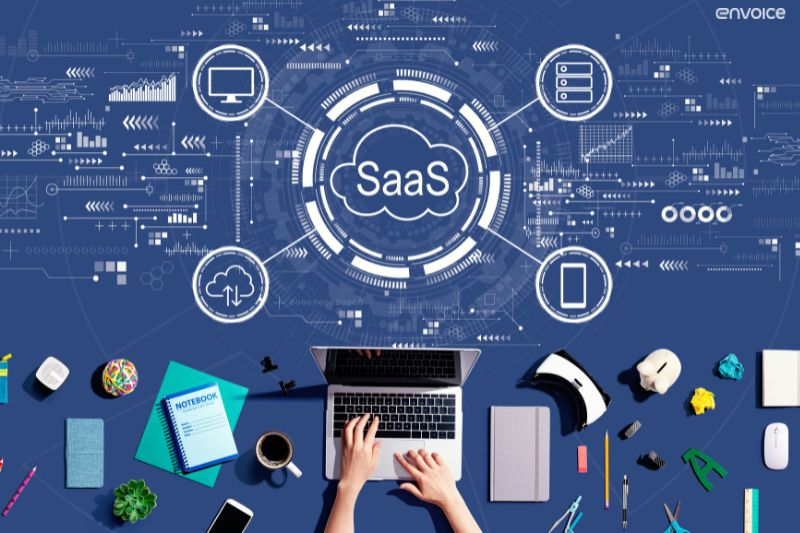
Here are some of the best ways to find the perfect accounting system when you have decided to automate your accounts payable and take your business financial management to the next level:
-
Understand Your Current AP Process
You cannot improve something if you don’t have a firm grasp of what is going on now and where areas of improvement may lie. So one of the first things to do is to understand your current process.
This will help you decide what accounts payable automation features you need, the current problems in your AP process, and their causes. You can do this by talking to your employees handling AP and looking at your current processes and procedures.
By knowing your current AP process, you can better decide what automation features are needed and how much time and financial resources it will take to implement the new software.
-
Prioritize Ease of Use
The best accounts payable automation software should have a simple interface that is intuitive and easy to navigate. It should also have a user-friendly layout, with all the essential features you need in one place. Remember that if the accounting software is not easy to use, it won’t help your business grow or even remain in operation.
If you’re looking for an accounts payable automation software solution that makes it easy to automate your AP processes, you should consider Envoice. This product has been designed with ease of use in mind and will enable you to get started right away without having to spend valuable time on training or learning how the system works.
-
Pricing
If you don’t compare prices, you could spend a lot more than you need on a product that doesn’t meet your needs. And if you’re on a tight budget, that could be a big problem.
You would want to make sure that the pricing is competitive. If other companies offer similar products at lower prices, it might be worth looking into their offerings before settling on one.
Envoice is also one of the most reasonably priced accounting software solutions available. The company offers a free 14-day trial and charges only €5 per month for their basic plan, which is far less expensive than competitors.
-
Customer Support
Customer support provides additional help and guidance for businesses using accounting software, including answers to any questions about how to use the system.
It also gives you access to professionals who can troubleshoot problems or provide training on how best to use the program. This help can be invaluable when trying something new, especially if your company has never used an online platform.
Implementation and Support
Leading AP automation solutions providers understand that transitioning to a new system can be challenging, which is why they offer comprehensive support and training. From initial onboarding to ongoing optimization, these providers guide your team through every step, helping you get the most out of your AP automation software. Training sessions, online resources, automation FAQs, and hands-on support ensure that your staff is comfortable with the new system and can fully leverage its features.
Ongoing support is essential for maintaining the effectiveness of your AP automation solution as your business grows and evolves, allowing you to streamline operations and improve financial processes.
Dealing With Common Accounts Payable Problems
Dealing with the accounts payable process means dealing with vendors, addresses, inventory, and more. Here are the most common problems businesses face when working with accounts payable:
-
Lost Invoices
Many companies do not always have an efficient way to submit invoices and other financial documents. As a result, they often lose important documents that their accountants and auditors need.
In addition, some employees may commit invoice fraud to steal money from their employer by claiming that they have lost invoice data or other financial documents that they never had in the first place. This can lead to serious consequences for the employee who makes such claims and their employer.
-
Inaccurate Invoices
Some businesses cut corners and simply don’t take the time to ensure consistent document management. Other companies are more careful, but mistakes are inevitable. It’s also possible that an invoice was sent in error, for example, if an employee accidentally submitted an invoice for the wrong product or service.
And finally, it’s possible that the invoice is accurate but was received by someone who doesn’t know how to process it correctly—perhaps because they’ve never dealt with this type of invoice before, or maybe because they’re new to their job and don’t understand how things work yet.
-
Poor Visibility
This makes it hard to tell what’s going on with your accounts payable processes. You might not know if there are any issues with your vendors or if someone isn’t doing their job. You may not even realize something is wrong until it’s too late.
Additionally, this can make it hard to track your financial data and know if you’re spending too much on things like inventory or labor costs. It’s easy for these errors to add up over time, so monitoring your accounts payable process regularly is essential.
Current State and Future Developments in AP Automation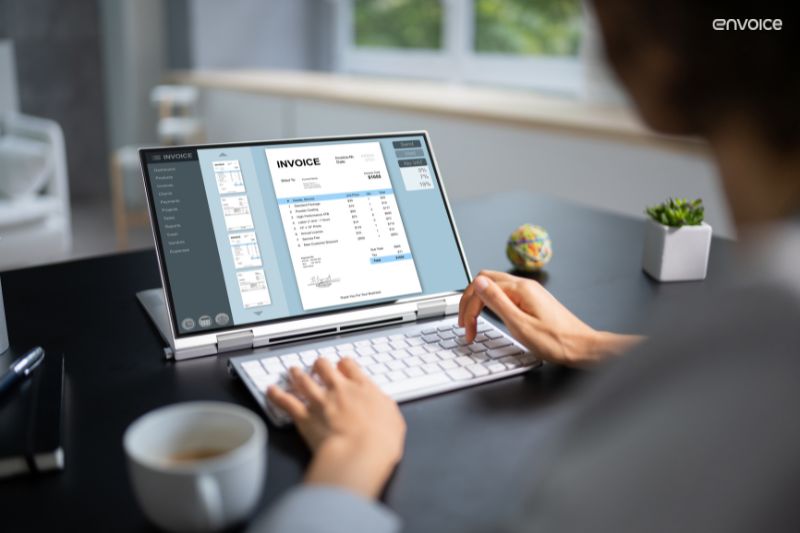
Senior Analyst at Forrester, Meng Liu, delved into top use cases for AP Automation in 2025, and found:
- Traditional optical character recognition technologies are fast being outpaced by AI-driven technologies, putting a proverbial stake in the heart of AP manual processes.
- AI models are revolutionizing invoice matching, handling complex matching processes with precision.
- Generative AI quickly deals with accounts payable tasks and approval routing, to generate real-time insights into a business’s financial state.
- AI technologies analyze historical payment behaviors to identify early payment discount opportunities and guarantee timely payments, all but eliminating late supplier payments.
- AI is streamlining e-invoicing and tax compliance by automating tax code determination and eliminating repetitive tasks.
Looking ahead, the future of AP automation is bright. One report estimates that automation software will reach a market share of $17,047.16 million by 2032, growing at a CAGR of 13.9% from 2024 to 2032.
Expect to see more advanced machine learning and artificial intelligence capabilities that further improve the accuracy and efficiency of AP processes. Integration with other financial systems, such as procurement and treasury management, will become more common, creating a unified platform for all your financial operations.
By staying up-to-date with the latest trends and best practices in AP automation, your organization can continue to optimize cash flow, achieve significant cost savings, and maintain a competitive edge in financial operations.
Takeaway
We hope that you have found this guide helpful and that you now have a better understanding of what accounts payable automation software can do for you. Odds are, if you’re reading this page, you’re taking the first step toward excellence.
Many people don’t realize that accounts payable can make or break your company. When you get rid of manual intervention in the AP process, and shift to digital formats, you guarantee that your business is moving with the times. The ability to speed up your AP process is a key benefit of automation and one every business owner, AP manager, and accounting professional should take seriously.
If you need more help, don’t hesitate to contact us here at Envoice; we can help you get started today. Additionally, you can check out our other accounts payable automation resources for a more detailed look at how our platform can help you get started.
Article Sources:
STAY ALWAYS TUNED
Subscribe to newsletter
Still not sure?
- Don’t spend time on manual work
- Streamline bookkeeping processes with AI
- Automate invoice processing
- Integrate with the tools you rely on every day








